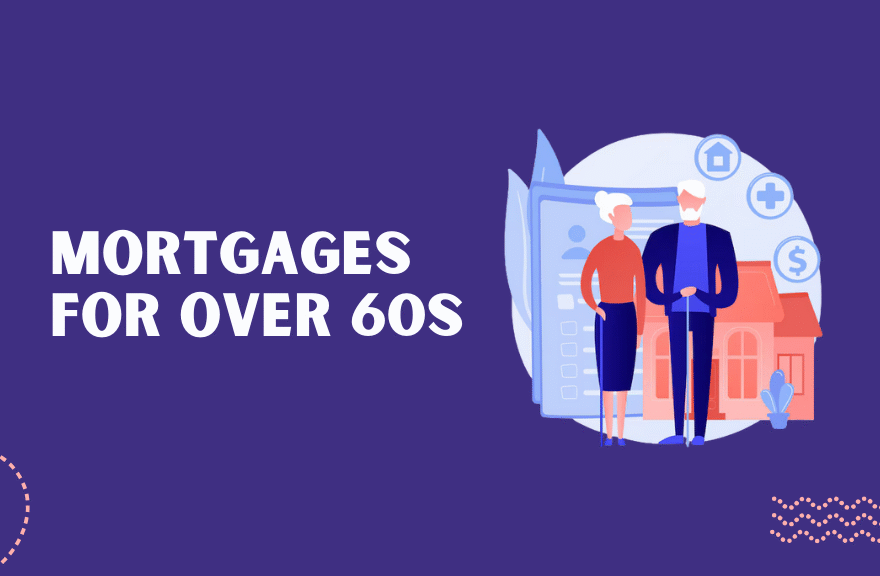Key Takeaways
- Mortgages for over-60s are available including later-life, retirement interest-only (RIO), and lifetime (equity release) options.
- Lenders may limit loan terms or require evidence of sustainable retirement income.
- Always get regulated advice from a qualified mortgage or equity-release specialist.
- Be mindful of compound interest, fees, and inheritance impact.
- Compare multiple lenders and request at least two written quotes before committing.
Introduction
Getting a mortgage over 60 is more common than ever. People are living longer, staying active in retirement, and often need flexible finance for home improvements, moving closer to family, or releasing funds for lifestyle needs.
While lenders once viewed post-retirement borrowing cautiously, the modern market now offers specialist mortgage products for older borrowers. The right choice depends on your income, equity, age, and long-term plans.
This guide explains how mortgages for over-60s work, what types are available, the key risks, and the steps to apply with confidence.
Why Mortgages for Over 60s Differ From Standard Loans
When you apply for a mortgage at 60 or beyond, lenders assess your situation differently than they would for a younger borrower.
1. Age and Term Restrictions
Many lenders set a maximum age at the end of the mortgage term, often 70, 75, or 85. This can limit how long you can borrow. For example:
- A 65-year-old may only qualify for a 10- to 15-year term with a mainstream lender.
- Some later-life mortgage specialists now extend terms to age 95 or have no fixed limit if the loan is interest-only.
2. Income and Affordability
Traditional affordability checks still apply, but lenders focus more on pension income, annuities, or investment returns rather than employment salary.
They’ll also review ongoing expenses and any dependents to ensure repayments remain affordable in retirement.
3. Property Equity
Older homeowners often hold substantial equity. This can make approval easier, especially if the loan-to-value (LTV) ratio is below 60%. A lower LTV generally means better interest rates and more product choice.
4. Purpose of the Loan
Some borrowers use later-life mortgages to:
- Refinance an existing loan approaching the end of term.
- Fund home renovations or energy-efficient upgrades.
- Gift an early inheritance to family members.
- Supplement retirement income without selling their home.
Common Types of Mortgages for Over 60s
1. Retirement Interest-Only (RIO) Mortgage
A RIO mortgage allows you to pay interest only during your lifetime. The loan balance is repaid when you sell the home, pass away, or move into long-term care.
Best for: Borrowers with steady pension income who want to keep monthly payments low and preserve their home ownership.
Pros
- Lower monthly payments than full-repayment mortgages.
- You keep 100% ownership of the property.
- No fixed term; continues for life unless repaid or refinanced.
Cons
- Interest payments continue indefinitely.
- The property must be sold to settle the balance eventually.
2. Lifetime Mortgage (Equity Release)
A lifetime mortgage lets you release tax-free cash from your property without monthly repayments. The interest rolls up (compounds) and is repaid from the property’s sale after death or long-term care.
Homeowners who need cash now and don’t want monthly bills.
Pros
- No monthly payments required.
- You can take a lump sum or smaller drawdowns.
- The “no negative equity” guarantee protects your estate.
Cons
- Interest compounds over time, reducing inheritance.
- Early repayment may trigger charges.
Example:
Borrow £100,000 at 6% compound interest after 15 years, the debt could exceed £240,000. Always discuss with an Equity Release Council-approved adviser.
3. Shorter-Term Conventional Mortgage
If you still have reliable income from pensions, investments, or part-time work, a traditional mortgage may still be an option.
These loans usually run for 10–25 years depending on income and lender policy. Some accept borrowers up to age 85 at the end of term.
Pros
- Familiar structure and repayment options.
- Lower overall interest cost than lifetime products.
Cons
- Higher monthly payments due to shorter terms.
- May require life-insurance or income-proof documentation.
How to Choose the Right Option
Your ideal mortgage depends on your financial goals, income, and comfort with debt.
Ask Yourself:
- Do you want to stay in your home for life?
→ Consider a RIO or lifetime mortgage. - Do you want to preserve inheritance value?
→ A shorter-term repayment mortgage or downsizing may be better. - Can you afford monthly payments comfortably?
→ Choose an option with predictable, manageable payments.
Step-by-Step Process
- Assess Your Finances
List pension income, savings, and regular expenses. Be realistic about post-retirement spending. - Get a Mortgage in Principle
This shows how much you could borrow and helps narrow lender choices. - Compare Specialist Lenders
Not every mainstream bank lends past retirement age. Use a broker with experience in later-life lending. - Seek Regulated Advice
Especially important for RIO and equity-release products. You can find impartial help via MoneyHelper or the Equity Release Council.
Costs and Risks to Watch For
1. Compound Interest
Lifetime mortgages allow interest to build up over time. Without repayments, the total owed can double in 12–15 years, reducing what’s left for beneficiaries.
2. Impact on Benefits
Taking cash from your home could affect means-tested benefits, such as pension credit or council tax support. Always ask your adviser to check before releasing funds.
3. Early Repayment Charges (ERCs)
If you repay or refinance a lifetime or fixed-term mortgage early, you may face significant fees. Some products offer downsizing protection after a few years.
4. Property Value Changes
Falling house prices could reduce your remaining equity or inheritance value. Lenders typically require periodic property valuations.
Real-World Example
Case Study: Mrs. A, Age 68
Mrs. A owned her home outright and needed £30,000 for roof repairs and accessibility upgrades. She compared:
- A Retirement Interest-Only mortgage at 5.8%, and
- A Lifetime mortgage with a 6.1% roll-up rate.
After consulting an Equity Release Council adviser, she chose the lifetime mortgage because:
- It had no monthly payments, fitting her fixed income.
- She qualified for a partial repayment option, reducing long-term costs.
- Comparing quotes from two brokers cut fees by £1,200.
Mrs. A kept her independence and avoided selling her home a practical solution aligned with her retirement goals.
Tips Before Applying
- Check total interest and fees: Calculate how much you’ll pay if the loan runs full term.
- Ask about flexibility: Can you make partial repayments or move without penalties?
- Verify lender credentials: Choose firms authorised by the Financial Conduct Authority (FCA).
- Review family impact: Discuss your plans with heirs to avoid inheritance misunderstandings.
- Compare advice sources: Use both independent mortgage brokers and equity-release specialists.
FAQs
1. Can someone over 60 get a mortgage?
Yes. Many lenders accept borrowers aged 60 and above, but they’ll assess affordability based on retirement income and age at end of term. Specialist later-life lenders may extend terms beyond 80 or 90.
2. Is equity release the same as a mortgage for over 60s?
Not exactly. Equity release (lifetime mortgage) lets you borrow without monthly payments, while RIO or standard mortgages require interest or full repayments.
3. Will borrowing affect my benefits or inheritance?
It might. Releasing equity can reduce the estate’s value and may impact means-tested benefits. Always seek independent financial advice first.
4. What is the minimum age for a RIO mortgage?
Usually 55 or 60, depending on the lender. RIOs are designed specifically for retirees or near-retirees with stable income.
5. How do I find a qualified later-life mortgage broker?
Look for advisers registered with the FCA and, for equity release, members of the Equity Release Council. Always request fee disclosures upfront.
Conclusion
Mortgages for over-60s are viable, flexible, and increasingly tailored to modern retirement lifestyles. Whether you need funds for home improvements, debt consolidation, or extra retirement income, there’s likely a product to match.
Before applying:
- Review your income, savings, and goals.
- Compare at least two lender quotes.
- Understand repayment terms, inheritance impact, and long-term costs.
If you’re unsure, speak to a regulated later-life mortgage adviser who can explain every option clearly and recommend the most suitable path.
A well-chosen mortgage can support financial comfort and independence throughout retirement without unnecessary risk.

Introducing Emily Parker, a seasoned professional with over 5 years of expertise in DSCR loans. With her extensive knowledge and experience in the field, Varsha has consistently demonstrated a deep understanding of DSCR loan intricacies and a proven track record of delivering successful outcomes for her clients.

